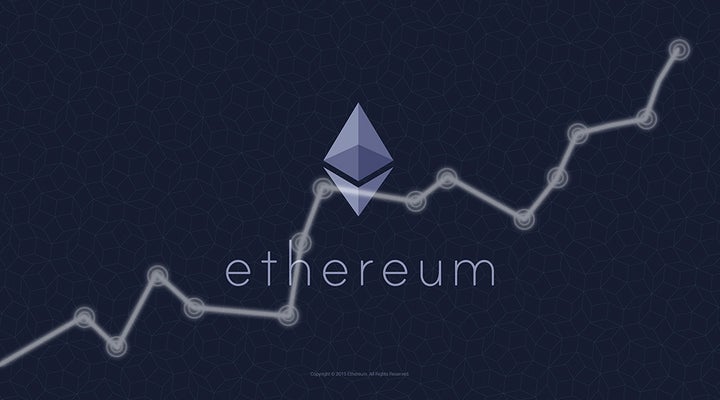
The price of Ether is skyrocketing.
Investors who bought Ether at the start of the year are seeing 900% ROI. Since my previous blogpost, Ethereum had another leg up, sending the entire crypto market cap close to 40 billion.
What are the factors behind the rise of this blockchain stock?
Where does it go from here?
In this post, we shall explore in depth the possible contributors to Ethereum’s success.
Before Ethereum even existed, there was Bitcoin. Bitcoin, since its inception in 2008, has been hailed as the most radical development in currency. On 2nd March 2017, and for the first time in history, a digital asset with no intrinsic value climbed above the price of gold. As Bitcoin’s price took the limelight over the years, it was easy to overlook Bitcoin’s underlying blockchain technology—blockchain as a tool of distributed consensus. Vitalik Buterin, however, was one of the early few who saw the potential of blockchain development, and thus Ethereum was born.
Ethereum was not made to compete with Bitcoin. For the most part, Ethereum is a blockchain-based decentralised platform for apps that run smart contracts, and is aimed at solving issues associated with censorship, fraud and third party interference. Ether, also known as ‘gas’, comes in as a necessary element for operating the distributed application distribution platform, Ethereum.
In short, Ethereum does everything that Bitcoin can do, and more. If Bitcoin warrants a market cap of 23.6 billion USD, how much further can the price of Ether go, with Ethereum market cap standing at a mere 7 billion USD?
The Bitcoin Hard Fork Contention
Part of Ethereum’s rise in price and interest could be attributed to the instability of Bitcoin in March, which has quite a bit of a backstory. Due to increasing Bitcoin usage, an increasing number of transactions are getting backlogged. As Bitcoin scurries to resolve this, two solutions surfaced: activate Segregated Witness or increase the block size. Both options tackle the Bitcoin network congestion, but unfortunately, the bigger miners have an interest in the latter: increasing the block size makes it harder for smaller miners to run a node on the network, which encourages centralization. Till now, the Bitcoin scaling issue is still present without a clear plan. Investors who were unsure of Bitcoin’s direction would have hedged into Ethereum, driving up demand for Ether.
The DAO Attack
Bitcoin is not the only cryptocurrency with issues; Ethereum has had its fair share of problems to deal with as well. ‘The DAO’ is a decentralized autonomous organization that raised over 150 million USD, making it the largest crowdfunding in history. On 18th June, a hacker managed to drain 3.6 million Ether from the fund into a ‘child DAO’ by exploiting a loop hole in smart contract terms. Following the incident, price of Ether dropped from 20 USD to 13 USD and below, reflecting the confidence of investors in the Ethereum network. That put the Ethereum Foundation in a tough spot. They do not wish for the smart contracts platform to be viewed as a failure, but if they do intervene to save the funds, they risk a possible reputation damage by not upholding their social contract with their network of independent nodes. In the end, the foundation handled the hack decisively with a swift and clean hard fork that created ETH (Ethereum) and ETC (Ethereum Classic). Nevertheless, the incident left a mark on Ethereum’s once untainted reputation.
The DAO hack might have set back the price of Ether a few months. The dent in the public’s confidence in Ethereum translated into a supressed Ether price much like a coiled spring, until the end of February when the Enterprise Ethereum Alliance (EEA) was announced.
Forming of the Enterprise Ethereum Alliance
The intense bull run of Ether in March is triggered by the announcement of EEA partners. The EEA initiative connects Fortune 500 enterprises and academics to support the development of enterprise-grade revolutionary software based on blockchain technology. The EEA launch saw big names such as Accenture, Microsoft, Intel, JP Morgan and UBS. It was jaw dropping; no one expected a cryptocurrency to receive that level of institutional support. Given that the companies were largely interested in Ethereum as a blockchain technology development platform and not Ether per se, this public display of confidence in Ethereum as the leading blockchain for future businesses was enough to send the price of Ether on a relentless climb.
Empowering Developers
Ethereum has built a community around developers who are devoted to bringing smart contracts mainstream. Ethereum has its very own language, Solidity, for writing smart contracts with the Ethereum Virtual Machine (EVM). The EVM is the primary innovation of the Ethereum project and can run code in a quasi-Turing complete manner. The Learning resources and code repositories are well documented and easily available on the web. By encouraging knowledge exchange, Ethereum makes developing decentralized apps (Dapps) enjoyable and exciting.
Currently, Ethereum has a huge lead in blockchain development and innovation. With a fast expanding developer base, it is only a matter of time before Ethereum-based Dapps crowd the top crypto scene.
Ethereum-based Dapps
Unlike that of Bitcoin and its clones, the relationship between Ethereum and its Dapps is symbiotic. Dapps such as Golem, which creates a decentralized sharing economy of computing power; Augur, which creates a decentralized prediction market; Melonport, which removes third parties and decentralizes asset management. Instead of in-fighting for a piece of market share in the crypto space, these Dapps seek to add value to our world by having real usage cases, expanding the Ethereum network and reach in the process. It is no wonder that the price of Ether, which acts as the fuel for the network, increases with the proliferation of its Dapps.
All the Pieces Coming Together
It is an exciting year to be holding Ether in your investments. On May 4th, we have Ethereum Naming Service coming online, which will let us bid for URL addresses ending with .eth soon. Next, we have the highly-anticipated EEA conference to announce new corporations coming on board. Then we have the Raiden release, which will make payment in Ethereum fast, scalable, confidential and interoperable. Lastly, we have Metropolis and Serenity updates, not forgetting the Casper update that will change Ethereum’s protocol from Proof of Work (Pow) to Proof of Stake (PoS) or hybrid PoS/PoW.
If the technical jargon is too much to handle at this point, just remember that lots of good news about Ethereum is coming, all of which will undoubtedly increase the value perception of Ether. Ultimately, remember that the crypto space is still predominantly running on speculation. Ethereum’s road map looks promising and personally, that is enough for me to take an interest in and invest in ETH.
Be it up or down, the crypto investing journey has always been wild and violent.
You have been warned, buckle up and hold on tight. :)
